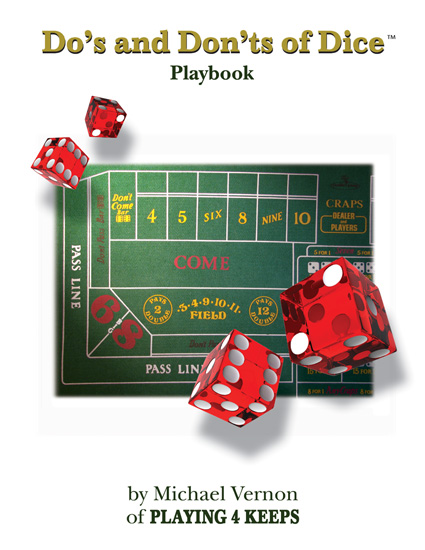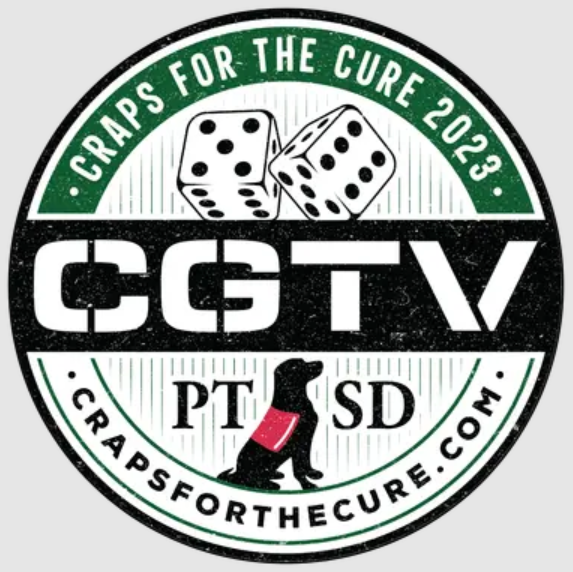|
Eye on the Ball...
BY: Michael Vernon
How far back in the archives of memory can you go to recall the first time you were told "keep your eye on the ball"? For me, I was so young that I had no idea of what the advice meant and I was confused. How I would ever get my eye out of my head and on to the ball, never mind answering why I would want to do such a thing? In education, this is known as a misconception of concept. It is the job of a teacher to discover students' misconceptions and demystify them in order to promote learning.
The theory of dice setting and manipulation is fairly simple and you can find numerous pages within the Dice Setter web site explaining the process. What is not so simple is for the player to develop a consistency with their toss from table to table, casino to casino, and from the home practice rig to the real thing.
Demystifying the misconception, that all you have to do is practice a lot, does not necessarily get the prize. If you practice with wrong notions or bad habits, you will become very good at the bad habits and notions. "How come my dice look great at home and at the casino they look like junk?" is a question that comes my way several times a month.
No two casinos are a like any more than any two craps tables. Certainly a practice rig at home, even if you have your own table, it is not going to be like the conditions found in a live game. Then what is the point of practice?
An overlooked element and probably the most important reason for practice is consistency through observation. Learn to observe the dice from start to finish. After all, this skill of dice manipulation is hinged to hand eye coordination. Anyone that has used a bow and arrow free style will understand this. You place the arrow where you are looking. There is no aiming involved. It is all intuitive shooting. (The Zen of Archery for more on this.)
Observing the dice as they come out of your hand will immediately tell you everything about your resulting throw. Watching the dice fly through the air, rotating, landing, and their position, provides you with valuable information. Without this information you will not be able to make adjustment or correction to an errant toss. You will be stuck wondering if you are just wasting your time.
It is recommended, if you have an opportunity, to have a "hands on" lesson from one of our coaches. Being observed and having the tossed tweaked is probably the quickest sure fix for bad habits and misconceptions. Coaches
The list below is simplified, never the less I present key important elements for consideration if you feel that you are missing something in your toss. Every sport has specific physical postures to obey for optimum results. In golf keep your head down. Baseball, eye on the ball. Football eye on the ball. Basketball bend knees, arch the ball, eye on the goal. Archery eye on the bulls eye and anchor the hand drawing the string.
Okay, that should give you the idea of some hand eye applications.
With the dice consider these:
- Once you have gripped the dice, position your hand with the dice perpendicular and parallel to the table.
- Touching your back hand to the table becomes your anchor spot. (consistency)
- Next you are able to turn your head and focus eyes on your landing zone. (Hand/eye coordination) You look at the place where you intend to drop your dice.
- Your hand is anchored and your eyes dictate "range to target", lock and load, message sent to your throwing arm.
- Forward motion with building momentum directs the speed and arc.
- As the arm swings upward, your hand comes into your field of vision.
- Since in the split second before shooting the dice, you sent the message, eye to brain, brain to hand, where to toss the dice, you now can observe how the dice leave your hand and travel in space to their destination.
- Like following a duck shot from the air, carefully observe every element once the dice leave your hand.
- Notice all things.
- As you train yourself to develop this skill it slots in automatically same as the way you quickly arranging the dice before picking them up.
- With practice it is second nature just like a quarterback scours the defense looking for their open receiver.
- In this way you can observe any inconsistencies in your toss, table to table, and know what is happening with your dice. Once you recognize a flaw, you just have to make an adjustment in your procedure.
- Once you do, touchdown!
I guess it is true. Beauty is in the eye of the... dice holder.
Michael Vernon
Click Here to return to the list of prior articles ...
|
 |










